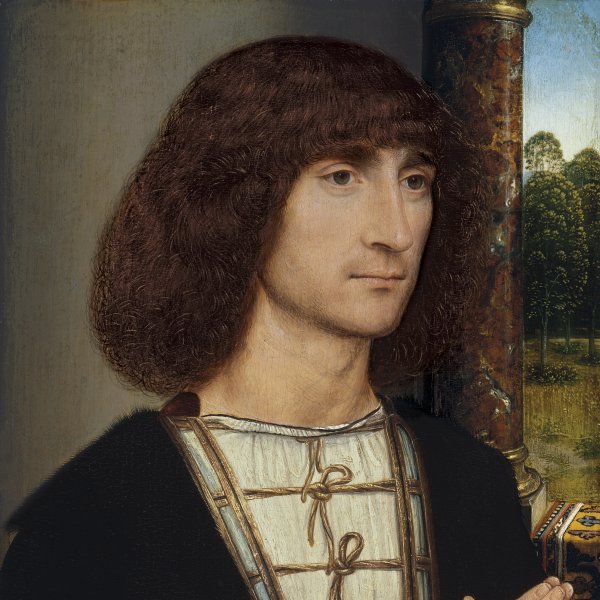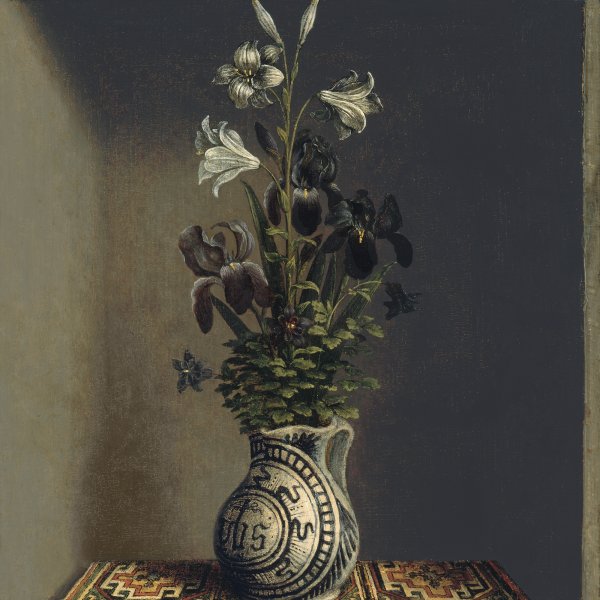Hans Memling
Seligenstadt, ca. 1435-Bruges, 1494
Memling was born in Germany in Seligenstadt near Frankfurt. By 1465 he was living in Bruges, and obtained citizenship that year. It has been suggested that he trained in Cologne, where he may also have encountered the work of Stephan Lochner. Memling was highly familiar with the work of Rogier van der Weyden, possibly as a result of a period spent in his workshop in Bruges between 1459 and 1464. It was Memling who disseminated Van der Weyden’s style, although his own works deliberately lack the drama of the older artist’s style. Instead, Memling created works of great refinement and elegance, imbued with a calm, serene mood. He was to be extremely significant for the work of other artists such as Gerard David and Juan de Flandes. Memling’s figure types, in particular his famous virgins, are executed with an enormous sense of harmony while their faces express a sweet beauty. In general this figure type is to be found in all his works. His principal contribution to Flemish painting lies in his use of extensive landscape backgrounds for his portraits, a device that had previously been used by Bouts in a more restrained fashion through the use of a window giving onto a landscape. Memling also introduced Italian elements into Flemish painting.
Most of the artist’s works were commissioned by the wealthy bourgeois classes in Bruges or by religious institutions, although he was also highly appreciated among the various foreign communities in the city, particularly the Italians. His portraits of Tomasso and Maria Portinari probably relate to this social circle (The Metropolitan Museum of Art, New York). Memling’s works include The Last Judgement Triptych of 1467 to 1471 (Narodowe Muzeum, Gdansk); The Triptych of the Saint Johns, of 1474 to 1479 (Memlingmuseum, Bruges); and The Virgin and Child with Saints and Donors (National Gallery, London). Late works include the Saint Christopher Triptych of 1484 (Groeningemuseum, Bruges), the Maerten van Nieuwenhove Diptych of 1487; and The Saint Ursula Casket of prior to 1489, a work that reveals Memling’s narrative skills (both Memlingmuseum, Bruges).
Most of the artist’s works were commissioned by the wealthy bourgeois classes in Bruges or by religious institutions, although he was also highly appreciated among the various foreign communities in the city, particularly the Italians. His portraits of Tomasso and Maria Portinari probably relate to this social circle (The Metropolitan Museum of Art, New York). Memling’s works include The Last Judgement Triptych of 1467 to 1471 (Narodowe Muzeum, Gdansk); The Triptych of the Saint Johns, of 1474 to 1479 (Memlingmuseum, Bruges); and The Virgin and Child with Saints and Donors (National Gallery, London). Late works include the Saint Christopher Triptych of 1484 (Groeningemuseum, Bruges), the Maerten van Nieuwenhove Diptych of 1487; and The Saint Ursula Casket of prior to 1489, a work that reveals Memling’s narrative skills (both Memlingmuseum, Bruges).





